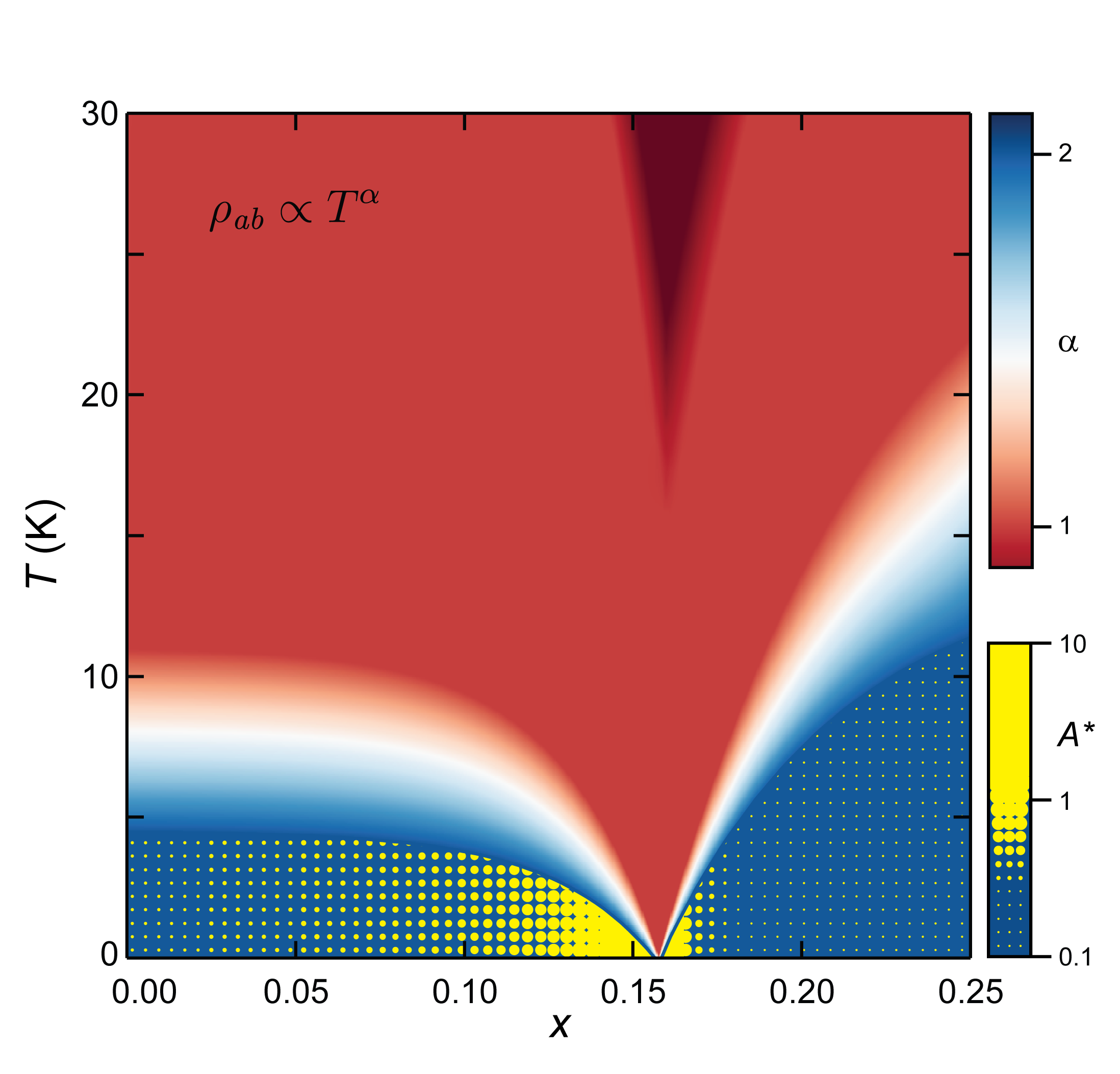Nigel Hussey, HFML Nijmegen.
It is not only elemental or ordinary metals that superconduct. Today, scientists are also fascinated by strange metals that undergo phase transitions (e.g. to a magnetic state) before superconductivity sets in. If they find the right tuning knob, scientists can suppress the temperature at which this transition occurs, driving it to 0 K. When doing so, the electrons start fluctuating quantum mechanically between the magnetic and non-magnetic phases without any thermal agitation. This is the quantum critical point. Accessing this quantum critical point is important for two reasons. Firstly, when the temperature is just above the critical point, the resistivity of the strange metal acts in a way that goes against every conventional theory. Secondly, it is highly likely that these critical fluctuations that cause the strange resistance are also responsible for inducing superconductivity, so if scientists can access this strange metallic state and study its behavior, they might be able to identify the interaction what causes superconductivity in these exotic systems.
Researchers from HFML in Nijmegen, together with Japanese collaborators, thought of a way to make superconductivity disappear and explored the metallic state down to the lowest temperatures possible. In FeSe, the electrons appear to undergo a transition to a purely nematic phase at a temperature close to 100 K. When exactly 1/6 of the Se atoms are substituted with S atoms, the transition temperature to the nematic phase is suppressed to 0 K. The quantum critical point itself is still ‘protected’ by a veil of superconductivity that must first be removed. In high magnetic fields, however, superconductivity will eventually succumb. Then, the strange metallic state revealed itself, extending all the way down to temperatures just one degree above absolute zero. As the quantum critical point is approached, the electrons become progressively heavier, ‘weighed down’ by the intensifying fluctuations of the nematic order.
The outcome was different from what the team expected. First of all, strange metal behavior had only been seen previously in systems close to a magnetic quantum critical point, never close to a purely nematic one. Indeed, there is currently no theoretical model that predicts this behavior. Secondly, while the critical fluctuations become stronger the nearer the system is to the nematic quantum critical point, the superconductivity itself does not become stronger. It raises new questions and begs for more research. How do electrons interact with nematic fluctuations to cause strange metallic behavior in the first place? Why is superconductivity in this particular system not enhanced near the quantum critical point? Nematic fluctuations are one possible route to high temperature superconductivity, but not, it seems, in the iron chalcogenides. Nevertheless, understanding what first inhibits the growth of superconductivity can help us understand what makes it grow.

Figure: Low-temperature phase diagram of FeSe1-xSx described in terms of the exponent of the T-dependent resistivity that is itself defined in the upper color scale. The density of dots inside the T2 regime indicate the strength of A*, the coefficient of the T2 resistivity, normalized to a fixed carrier density (and defined in the lower color scale).
Electrical resistivity across a nematic quantum critical point, S. Licciardello, J. Buhot, J. Lu, J. Ayres, S. Kasahara, Y. Matsuda, T. Shibauchi, and N.E. Hussey, Nature 567, 213 (2019).
https://www.nature.com/articles/s41586-019-0923-y
Contact: nigel.hussey@ru.nl






